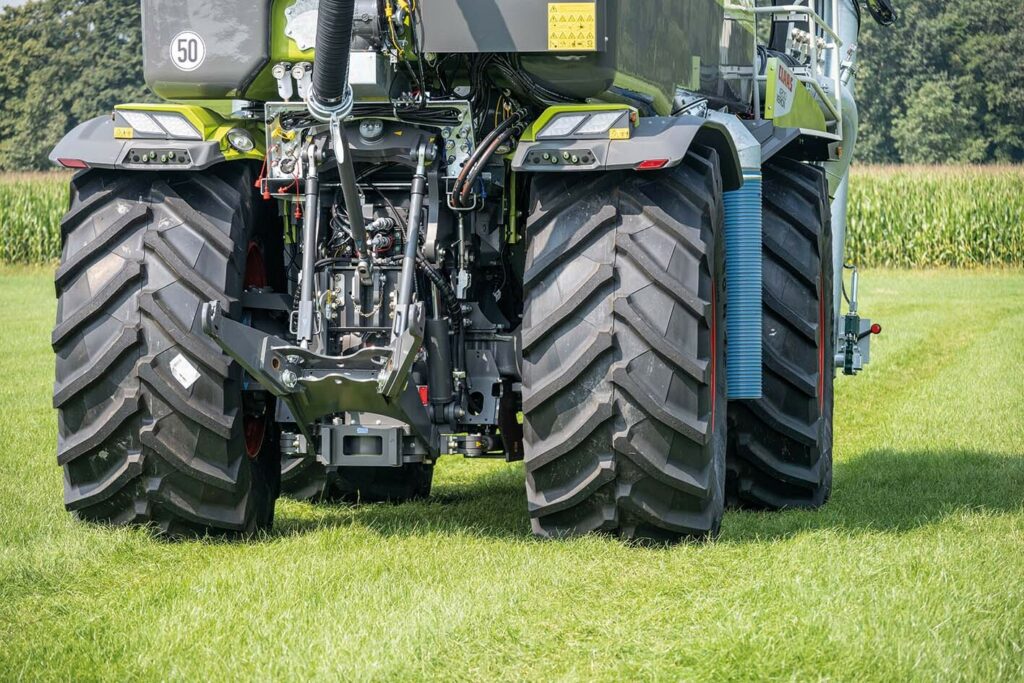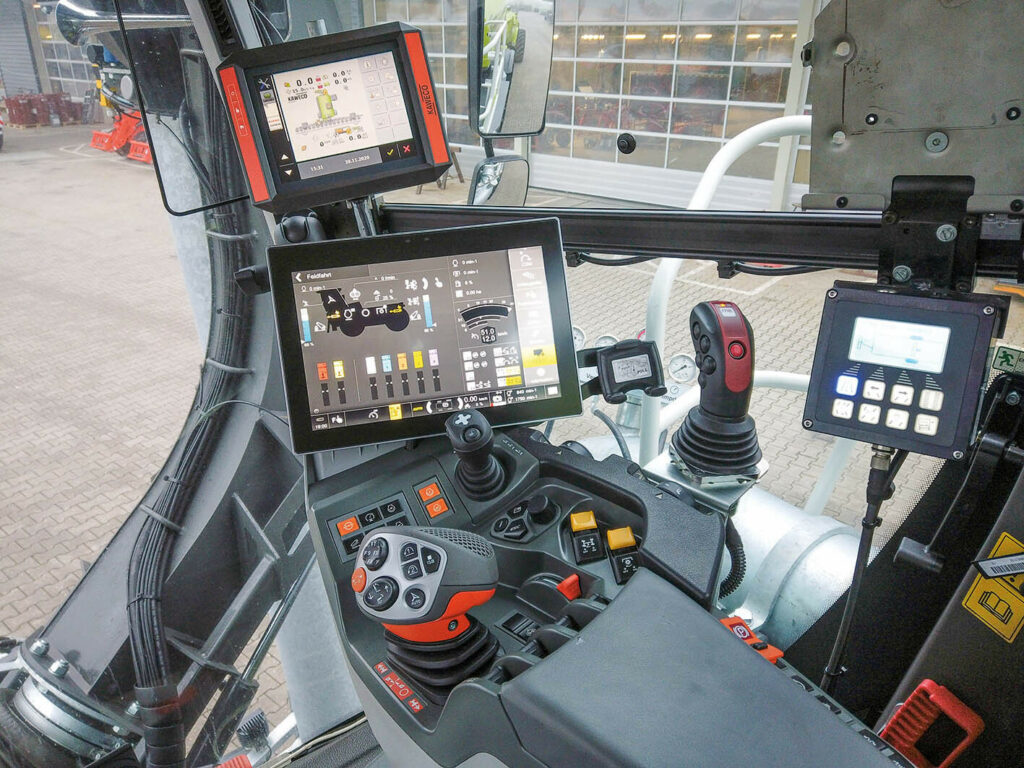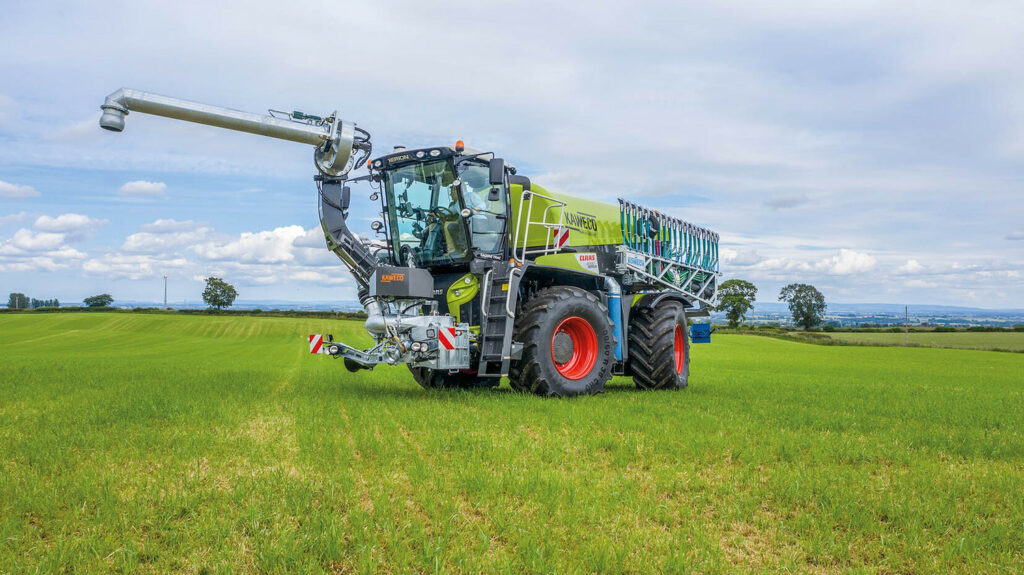“Perfect interaction” between tank and tractor
6th May 2022
Since the Claas Xerion was introduced in 1993, Kaweco has been a partner in slurry technology – besides gooseneck tankers and semi-trailed tankers, it produces its own build-on for the Xerion Saddle Trac. Kaweco explains the product’s key features.
The Xerion Saddle Trac is equipped with a strong 462hp Mercedes engine. Because of the hydrostatic-mechanical drive, Kaweco says the machine has unprecedented pulling power, which is especially important in mountainous areas.
Additionally, 900/60R42 tyres can be mounted on the Saddle Trac, and these can be optionally equipped with a tyre inflation system. There is no track overlap due to the use of the Xerion’s Crab Steering mode. All this means that the soil is spared as much as possible.
The build-on tank is made entirely of epoxy resin and has a capacity of 16,000 litres. This construction method reduces the weight, so that the effective content can be increased. The inside of the tank is fitted with four bulkheads, two in the length and two in the width. This is to increase the driving comfort and to guarantee a long lifespan of the tank, Kaweco explains.

Crab steering.
The Kaweco Saddle Trac is standard equipped with a front unit on the machine. The arm has a swivel range of 135 degrees and can dock both low and high. In its class, there is no arm with as much reach as this one, Kaweco claims. The andock arm of the front unit is fully controllable with the Kaweco proportional joystick. The Go Home function puts the front unit in transport position with just one push of a button, and because the front unit is placed behind a cabin pillar, the view is not obstructed during transport.
Another part of the front unit is the stone catcher with hydraulically-driven cutting mechanism. Stones are caught and any feed or straw residue is cut into pieces. All this is done to preserve both the rotary lobe pump and the distributors. The stone catcher can be opened hydraulically via the Kaweco Terminal.
A 9,000-litre/min Vogelsang rotary lobe pump is fitted as standard. Optionally, a 12,000-litre/min rotary lobe pump can be chosen. To guarantee the capacity, the slurry route is made up of 10in suction pipes and a 10in maxi filler. The large maxi filler in the front unit ensures that the slurry is pushed towards the pump. This results in a high capacity and longer life of the rotary lobe pump due to the low underpressure.

Saddle Trac cabin.
A clever positioning of the slurry pump results in a minimum number of bends and therefore minimum resistance. Furthermore, the pump is easy to remove at the back with a pallet fork, for example, for maintenance. Because the slurry pump is mounted as close as possible to the fertiliser, as little slurry as possible is pumped around unnecessarily.
At the pressure side of the slurry pump, the 8in three-way valve is placed which switches between circulating and spreading. Kaweco always places this valve as short as it can on the fertiliser so that at the start of the next pass, slurry is immediately available.
The Kaweco Saddle Trac is known for the perfect interaction between tank and tractor. The rotary lobe pump is driven by the power hydraulics of the Xerion. The Kaweco computer communicates directly with the Cebis computer of the Xerion and therefore ensures a very accurate automatic dispensing system. During application the engine speed can be adjusted to the required power, resulting in lower diesel consumption. Through the Isobus, communication functions can be assigned to the Xerion’s multifunctional gear lever and Kaweco’s proportional joystick.

